2018-11-08 - Nº 184

Editorial
Esta é a Newsletter Nº 184 que se apresenta com o mesmo formato que as anteriores. Se gostar da Newsletter partilhe-a!
Todas as Newsletters encontram-se indexadas no link.
Esta Newsletter tem os seguintes tópicos:
Faz hoje anos que nascia, em 1656, Edmond Halley. Este astrónomo, geofísico e matemático inglês, ficou conhecido por reconhecer que um cometa brilhante (mais tarde chamado com o seu nome) apareceu diversas vezes, calculando sua órbita e prevendo com sucesso seu retorno. Depois de ter originado a pergunta que incitava Isaac Newton a escrever o seminal Philosophiae Naturalis Principia Mathematica, Halley editou e organizou a sua publicação. Halley foi professor de geometria em Oxford e mais tarde nomeado astrónomo real. Halley identificou o movimento apropriado das estrelas, estudou o movimento e as marés da Lua, percebeu que as nebulosas eram nuvens de gás luminoso entre as estrelas e que a aurora era um fenómeno ligado ao magnetismo da Terra. A sua previsão do trânsito de Vénus levou à viagem do capitão James Cook ao Taiti.
Faz também anos hoje que nascia, em 1848, Gottlob Frege. Este matemático e lógico alemão fundou a lógica simbólica moderna e foi o primeiro a mostrar a matemática como uma extensão da lógica. Ele estendeu o trabalho de Boole inventando símbolos lógicos (símbolos para “ou”, “se-então”, etc.) que melhoraram a lógica silogística que substituiu. Ele também trabalhou em questões gerais de lógica filosófica e semântica. A sua teoria do significado, baseada em fazer uma distinção entre o que um termo linguístico se refere e o que ele expressa, ainda é influente. Frege tentou fornecer uma base rigorosa para a matemática com base em princípios puramente lógicos, mas abandonou a tentativa quando Bertrand Russell, em cujo trabalho ele teve uma profunda influência, apontou um paradoxo que tornou o sistema inconsistente.
Faz igualmente anos hoje que nascia, em 1854, Johannes Rydberg. Este físico sueco ficou conhecido pela constante de Rydberg na sua fórmula empírica que relacionava os números de onda das linhas espectrais de um elemento (1890). Esta fórmula expressava relações fundamentais nessas linhas, que ele supunha serem o resultado da natureza e estrutura internas dos átomos de um elemento. Em 1897, ele sugeriu que um número atómico para cada um dos elementos, em vez de pesos atómicos, seria uma forma melhor para organizar os elementos e a sua periodicidade das suas características. O seu trabalho forneceu a base para a descoberta da estrutura do invólucro de electrões do átomo. Posteriormente, foi estabelecido que o número inteiro de cargas positivas no núcleo de um elemento (seu número de protões) correspondia à sua ideia de número atómico.
Faz também anos hoje que nascia, em 1866, Herbert Austin. Este engenheiro inglês fundou a Austin Motor Company (1905), cujo modelo Austin Seven influenciou muito o design britânico e europeu de carros leves. Em 1884, após concluir sua educação inicial, Herbert mudou-se para Melbourne, na Austrália, e aprendeu engenharia na Langlands Foundry. Mais tarde ele tornou-se o gerente da Wolseley Sheep Shearing Company. Em 1893, ele volta ao Reino Unido com essa empresa em 1893 e tornou-se logo o gerente de produção. Da experiência obtida nas longas jornadas no interior da Austrália, ele teve uma visão sobre a necessidade de veículos movidos a gasolina. Em 1895, ele produziu o primeiro carro Wolseley (um veículo de três rodas) e em 1900, seu primeiro design de quatro rodas Wolseley. Em 1914, a empresa produzia mais de 1000 carros com 2000 funcionários.
Faz igualmente anos hoje que nascia, em 1923, Jack Kilby. Este engenheiro eletrotécnico norte-americano inventou o primeiro circuito integrado (IC), pelo qual partilhou o Prémio Nobel de Física 2000. O seu interesse por eletrónica cresceu no seu passatempo de rádio amador dos tempos da escola. Anos depois, a trabalhar na Texas Instruments, ele inventou uma maneira de miniaturizar um complicado circuito de transístores, construindo os seus componentes num bloco de silício com conexões internas que eliminavam a fiação externa. Em 12 de setembro de 1958, ele demonstrou seu primeiro circuito integrado ao seu supervisor. Alguns meses depois, um dispositivo IC numa forma melhorada foi inventado noutra parte por Robert Noyce. Geoffrey W.A. Dummer também teve o conceito anos antes, mas não um dispositivo funcional. Em setembro de 1965, a equipa de Kilby desenvolveu a primeira calculadora eletrónica de bolso usando IC's.
Por fim, faz anos hoje que nascia, em 1986, Aaron Swartz. Este programador de computadores norte-americano foi empresário, escritor, organizador político e hacktivista da Internet. Ele esteve envolvido no desenvolvimento do formato de feed RSS e no formato de publicação Markdown, na organização Creative Commons, e na estrutura do site web.py, e foi co-fundador da o site de notícias sociais Reddit. Ele recebeu o título de co-fundador pelo proprietário da Y Combinator, Paul Graham, após a formação da Not a Bug, Inc. (uma fusão do projeto Infogami de Swartz com uma empresa dirigida por Alexis Ohanian e Steve Huffman).
Nesta semana que passou ficámos a saber que a IBM vai adquirir a Red Hat. Esta aquisição vem tornar a IBM um dos maiores providers de Cloud. Por outro lado reforça a presença do Open Source no mundo corporate. A Red Hat é a fabricante do RHEL e do Fedora, distribuição que fez esta semana 15 anos.
Na Newsletter desta semana apresentamos diversos projetos de maker assim como um modelo 3D que poderá ser útil.
 João Alves ([email protected])
João Alves ([email protected])
O conteúdo da Newsletter encontra-se sob a licença  Creative Commons Attribution-NonCommercial-ShareAlike 4.0 International License.
Creative Commons Attribution-NonCommercial-ShareAlike 4.0 International License.
Novidades da Semana

IBM To Acquire Red Hat, Completely Changing The Cloud Landscape And Becoming World's #1 Hybrid Cloud Provider
"IBM and Red Hat, the world’s leading provider of open source cloud software, announced today that the companies have reached a definitive agreement under which IBM will acquire all of the issued and outstanding common shares of Red Hat for $190.00 per share in cash, representing a total enterprise value of approximately $34 billion. “The acquisition of Red Hat is a game-changer. It changes everything about the cloud market,” said Ginni Rometty, IBM Chairman, President and Chief Executive Officer. “IBM will become the world’s #1 hybrid cloud provider, offering companies the only open cloud solution that will unlock the full value of the cloud for their businesses. “Most companies today are only 20 percent along their cloud journey, renting compute power to cut costs,” she said. “The next 80 percent is about unlocking real business value and driving growth." [...]
Outras Notícias
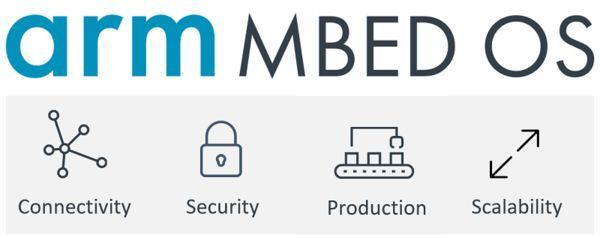
Mbed OS 5.10.3 released
"We are pleased to announce the Mbed OS 5.10.3 release is now available. This is the latest patch release based on the feature set that Mbed OS 5.10 introduces. Summary In this release we have continued to focus on improving our documentation. We now have support for FUTURE_SEQUANA devices. We have fixed the following reported issues: Low power ticker wrapper layer still used when suspended Error occurs when building exported mbed-os programs on e2studio CMake exported build fails with multiple source arguments ATHandler::consume_to_tag method doesn't detect tags in some cases UBLOX_EVK_ODIN_W2 does not pass Greentea testcase WIFI-CONNECT The ODIN drivers have been updated to v3.5.0 RC1. This brings: BLE Cordio Stack Ported for ODIN_W2 Updated ODIN drivers for BLE cordio We have also added: QSPI support for KL82Z and K82F Bootloader support for DISCO_F769NI TRNG support for STM32F407VG Bootloader support for DISCO_F413ZH and NUCLEO_F413ZH There are also a number of other fixes and code improvements." [...]

STMicroelectronics Makes Leading Ultra-Low-Power MCU Family Even More Accessible with New STM32L0 Value Line
"New STM32L0x0 Value Line microcontrollers (MCUs) from STMicroelectronics present an additional, low-cost entry point to the STM32L0 * series, delivering ultra-low-power technology and efficient 32-bit performance with the Arm® Cortex® -M0+ core for designers facing tight cost, size, or power constraints. With up to 128Kbyte Flash memory, 20KByte SRAM, and 512Byte true embedded EEPROM on-chip the STM32L0x0 MCUs save external components to cut down on board space and BOM cost. In addition to price-sensitive and space-constrained consumer devices such as fitness trackers, computer or gaming accessories, and remotes, the new STM32L0x0 Value Line MCUs are ideal for personal medical devices, industrial sensors, and IoT devices such as building controls, weather stations, smart locks, smoke detectors, or fire alarms. ST’s power-saving low-leakage process technology and device features such as a low-power UART, low-power timer, 41µA 10ksample/s ADC, and wake-up from power saving in as little as 5µs, bring ambitious energy-management targets within reach. Designers can use these devices to achieve goals such as extending battery runtime without sacrificing product features, increasing wireless mobility, or endowing devices like smart meters or IoT sensors with up to 10-year battery-life leveraging the ultra-frugal 670nA power-down current with RTC and RAM retention. Complementing the affordability of the new Value Line devices, the development ecosystem allows low-cost design starts." [...]
Ciência e Tecnologia

New Tech Delivers High-Tech Film That Blocks Electromagnetic Interference
"NYU Tandon Chemical Engineer Andre Taylor and Collaborators Use Cost-Effective Process to Make Strong, Flexible Films that Allow Light In but Keep Electromagnetic Interference Out Electromagnetic interference (EMI), which can harm smartphones, tablets, chips, drones, wearables, and even aircraftand human health, is increasing with the explosive proliferation of devices that generate it. The marketfor EM-blocking solutions, which employ conductive or magnetic materials, is expected to surpass $7 billion by 2022. André Taylor, associate professor of chemical and biomolecular engineering at the NYU Tandon School of Engineering, along with a team that included Yury Gogotsi, Distinguished University and Charles T. and Ruth M. Bach Professor Materials Science and Engineering at Drexel University, and Menachem Elimelech, Roberto C. Goizueta Professor of Chemical & Environmental Engineering at Yale University used an innovative technique to produce relatively low-cost EMI-blocking composite films. The study, “Layer-by-Layer Assembly of Cross-Functional Semi-transparent MXene-Carbon Nanotubes Composite Films for Next-Generation Electromagnetic Interference Shielding,” appears in the October 31, 2018 issue of Advanced Functional Materials. Lead authors include Guo-Ming Weng, a post-doctoral fellow at NYU Tandon, and Jinyang Li, associate professor of materials science and engineering at Southwest Jiaotong University, Chengdu, China. To fashion the films, the team employed spin-spray layer-by-layer processing(SSLbL), a method Taylor pioneeredin 2012." [...]

Electronic Highways on the Nanoscale
"For the first time, the targeted functionalization of carbon-based nanostructures allows the direct mapping of current paths, thereby paving the way for novel quantum devices Computers are getting faster and increasingly powerful. However, at the same time computing requires noticeably more energy, which is almost completely converted to wasted heat. This is not only harmful to the environment, but also limits further miniaturization of electronic components and increase of clock rates. A way out of this dilemma are conductors with no electrical resistance. Based on carbon nanostructures, such conductors can be realized. By applying sophisticated heating processes to nanostructured silicon carbide crystals, small graphene structures, so-called graphene nanoribbons, can be produced at their edges." [...]
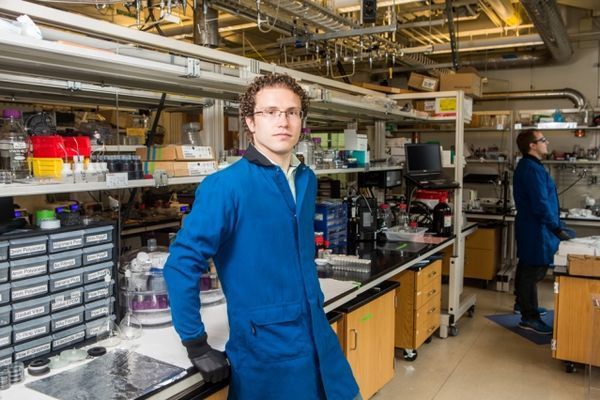
Harnessing the power of sustainable energy
"With a love for the environment that took root on his family’s farm, senior Jesse Hinricher aims to put less expensive components into more efficient batteries. Energy production can be expensive, or inefficient, or toxic to the environment — or some unfortunate combination of the three. But Jesse Hinricher thinks it doesn’t have to be. Hinricher, an MIT senior majoring in chemical engineering, has been conducting research focused on specialized batteries that could be plugged into the grid to provide renewable energy on demand. Specifically, he works on swapping out some of the pricier electrolytes in so-called redox flow batteries for more abundant ones, which could help make clean energy more affordable. He cites his rural childhood as the initial source of his passion for environmental conservation." [...]

Army scientist seeks enhanced Soldier systems through quantum research
"Researchers at the U.S. Army Research Laboratory and the Joint Quantum Institute have created a pristine quantum light source that has the potential to lead to more secure communications and enhanced sensing capabilities for Soldiers. ARL's Dr. Elizabeth Goldschmidt and JQI's Dr. Sunil Mittal and Prof. Mohammad Hafezi discuss this research in their paper titled "A topological source of quantum light" that is featured in the journal Nature. Photons, the smallest amount of light that exists, are useful when it comes to carrying quantum information, which can be used for encryption to avoid interception from adversaries and enhanced sensitivity to the environment. According to the researchers, one major part of the puzzle is that the photons must be undisturbed and as similar as possible in order for secure communications and Soldier systems to operate at the highest quality. The research team has successfully developed a silicon chip that guides light around the device's edge, where it is protected from disruptions. "Quantum sources, such as the one demonstrated in our research, are an enabling technology for integrated photonics-based scalable quantum networks and quantum information systems that require indistinguishable photons," Goldschmidt said For this experiment, the researchers used silicon to convert infrared laser light into pairs of different-colored single photons." [...]

One step closer to complex quantum teleportation
"Novel complex quantum entanglement generated in the laboratory for the first time For future technologies such as quantum computers and quantum encryption, the experimental mastery of complex quantum systems is inevitable. Scientists from the University of Vienna and the Austrian Academy of Sciences have succeeded in making another leap. While physicists around the world are trying to increase the number of two-dimensional systems, so-called qubits, researchers around Anton Zeilinger are breaking new ground. They pursue the idea to use more complex quantum systems as qubits and thus can increase the information capacity with the same number of particles. The developed methods and technologies could in the future enable the teleportation of complex quantum systems. The results of their work "Experimental Greenberger-Horne-Zeilinger Entanglement Beyond QuBits" is published recently in the renowned journal "Nature Photonics"." [...]

Physicists name and codify new field in nanotechnology: 'electron quantum metamaterials'
"When two atomically thin two-dimensional layers are stacked on top of each other and one layer is made to rotate against the second layer, they begin to produce patterns — the familiar moiré patterns — that neither layer can generate on its own and that facilitate the passage of light and electrons, allowing for materials that exhibit unusual phenomena. For example, when two graphene layers are overlaid and the angle between them is 1.1 degrees, the material becomes a superconductor. “It’s a bit like driving past a vineyard and looking out the window at the vineyard rows. Every now and then, you see no rows because you’re looking directly along a row,” said Nathaniel Gabor, an associate professor in the Department of Physics and Astronomy at the University of California, Riverside. “This is akin to what happens when two atomic layers are stacked on top of each other. At certain angles of twist, everything is energetically allowed." [...]
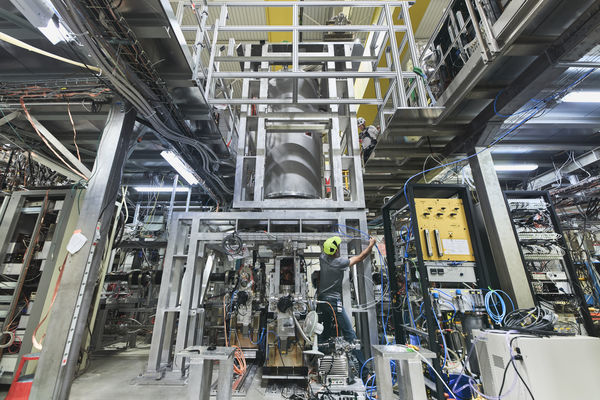
New antimatter gravity experiments begin at CERN
"The ALPHA-g and GBAR experiments have received their first beams of antiprotons We learn it at high school: release two objects of different mass in the absence of friction forces and they fall down at the same rate in Earth’s gravity. What we haven’t learned, because it hasn’t been directly measured in experiments, is whether antimatter falls down at the same rate as ordinary matter or if it might behave differently. Two new experiments at CERN, ALPHA-g and GBAR, have now started their journey towards answering this question. ALPHA-g is very similar to the ALPHA experiment, which makes neutral antihydrogen atoms by taking antiprotons from the Antiproton Decelerator (AD) and binding them with positrons from a sodium-22 source. ALPHA then confines the resulting neutral antihydrogen atoms in a magnetic trap and shines laser light or microwaves onto them to measure their internal structure. The ALPHA-g experiment has the same type of apparatus for making and trapping antiatoms, except that it is oriented vertically." [...]

A faster, cheaper path to fusion energy
"Scientists are working to dramatically speed up the development of fusion energy in an effort to deliver power to the electric grid soon enough to help mitigate impacts of climate change. The arrival of a breakthrough technology—high-temperature superconductors, which can be used to build magnets that produce stronger magnetic fields than previously possible—could help them achieve this goal. Researchers plan to use this technology to build magnets at the scale required for fusion, followed by construction of what would be the world's first fusion experiment to yield a net energy gain. The effort is a collaboration between Massachusetts Institute of Technology's Plasma Science & Fusion Center and Commonwealth Fusion Systems, and they will present their work at the American Physical Society Division of Plasma Physics meeting in Portland, Ore. Fusion power is generated when nuclei of small atoms combine into larger ones in a process that releases enormous amounts of energy. These nuclei, typically heavier cousins of hydrogen called deuterium and tritium, are positively charged and so feel strong repulsion that can only be overcome at temperatures of hundreds of millions of degrees. While these temperatures, and thus fusion reactions, can be produced in modern fusion experiments, the conditions required for a net energy gain have not yet been achieved." [...]

Dancing atoms in perovskite materials provide insight into how solar cells work
"A new study is a step forward in understanding why perovskite materials work so well in energy devices and potentially leads the way toward a theorized “hot” technology that would significantly improve the efficiency of today’s solar cells. A closer look at materials that make up conventional solar cells reveals a nearly rigid arrangement of atoms with little movement. But in hybrid perovskites, a promising class of solar cell materials, the arrangements are more flexible and atoms dance wildly around, an effect that impacts the performance of the solar cells but has been difficult to measure. In a paper published in the Proceedings of the National Academy of Sciences, an international team of researchers led by the U.S. Department of Energy’s SLAC National Accelerator Laboratory has developed a new understanding of those wild dances and how they affect the functioning of perovskite materials. The results could explain why perovskite solar cells are so efficient and aid the quest to design hot-carrier solar cells, a theorized technology that would almost double the efficiency limits of conventional solar cells by converting more sunlight into usable electrical energy. Piece of the puzzle Perovskite solar cells, which can be produced at room temperature, offer a less expensive and potentially better performing alternative to conventional solar cell materials like silicon, which have to be manufactured at extremely high temperatures to eliminate defects." [...]
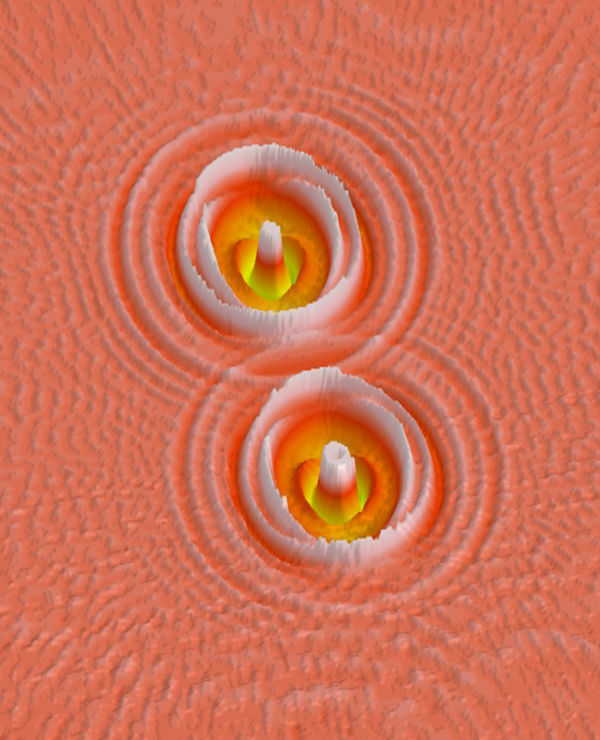
New Research Center to Explore Spintronics Materials for Advanced Computing
"The U.S. Department of Commerce’s National Institute of Standards and Technology (NIST) and its partners in the Nanoelectronic Computing Research (nCORE) consortium have awarded funding for a new research center to focus on novel materials for advanced computing systems. The Center for Spintronic Materials in Advanced Information Technologies (SMART) will be led by and housed at the University of Minnesota Twin Cities and will include researchers from the Massachusetts Institute of Technology, Pennsylvania State University, Georgetown University and the University of Maryland. Through nCORE, NIST will provide $7.5 million over four years, funding that will be matched with a $2.8 million contribution from the SMART partners. Spintronics focuses on the magnetic “spin” properties of electrons, as opposed to their charges, which is the focus of electronics. Spintronics offers advantages over electronics such as higher speeds, lower energy needs and increased stability under certain conditions. Advances in the materials needed for spintronics devices could enable new computational systems, including neuromorphic systems inspired by the human brain that promise to dramatically improve the efficiency of important tasks." [...]

New efficiency record for low-cost solar cell
"Researchers at The Australian National University (ANU) have achieved a new record efficiency for low-cost semi-transparent perovskite solar cells in a breakthrough that could bring down the cost of generating solar electricity. The team led by The Duong from the ANU Research School of Engineering have achieved 26 per cent efficiency in converting sunlight into energy, which could help make perovskite solar cells a viable alternative to existing silicon cells. Perovskite is a material with a lattice-like structure that can help harvest light. Researchers have achieved 26 per cent efficiency by mechanically combining perovskite with silicon solar cells. “Until now efficiencies of this kind have only been achieved using high cost materials normally used on satellites,” said Mr Duong, a PhD student. “We are now a step closer to a low cost alternative.” Silicon solar cell technology is about 90 per cent of the solar market, but scientists around the world are working to find a way to make them more efficient, affordable, stable and reliable." [...]
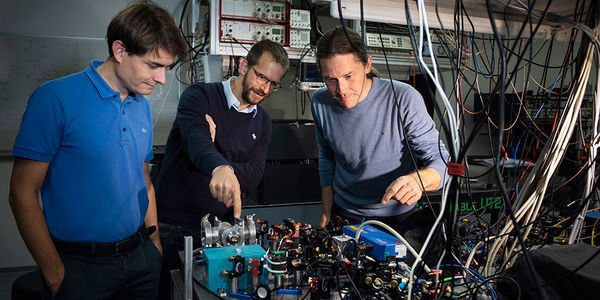
Quantum Technologies Flagship: Basel physicists participate in three research consortia
"Today, the European Commission launched its flagship initiative on quantum technologies. Three research groups from the Department of Physics at the University of Basel are involved. The aim of the 1 billion euro research and technology funding program is to develop radically new and powerful quantum technologies by exploiting various quantum effects. Quantum physics describes the behavior of matter at a microscopic level and forms the basis for the great technological revolutions of the last few decades. Without an understanding of quantum physics, computer and communications technology, laser and medical imaging techniques would never have been developed. Until now, however, these technologies have not yet exploited the full potential of quantum physics, which allows for radically new phenomena: particles can be in a superposition of several states at the same time, or two distant, “entangled” particles can form such a strong unit that their properties are no longer independent of each other." [...]
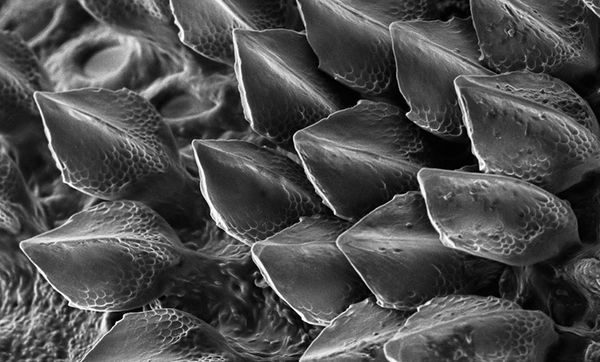
Codebreaker Turing's theory explains how shark scales are patterned
"Scientists from the University of Sheffield’s Department of Animal and Plant Sciences found that Turing’s reaction-diffusion theory – widely accepted as the patterning method in mouse hair and chicken feathers – also applies to shark scales. The findings can explain how the pattern of shark scales has evolved to reduce drag whilst swimming, thereby saving energy during movement. Scientists believe studying the patterning could help to design new shark-inspired materials to improve energy and transport efficiency. Turing, forefather of the computer, came up with the reaction-diffusion system which was published in 1952, two years before his death. His equations describe how molecular signals can interact to form complex patterns. In the paper, published today (7 November 2018) in the journal Science Advances, researchers compared the patterning of shark scales to that of chicken feathers." [...]

Batteryless smart devices closer to reality
"Researchers at the University of Waterloo have taken a huge step towards making smart devices that do not use batteries or require charging. These battery-free objects, which feature an IP address for internet connectivity, are known as Internet of Things (IoT) devices. If an IoT device can operate without a battery it lowers maintenance costs and allows the device to be placed in areas that are off the grid. Many of these IoT devices have sensors in them to detect their environment, from a room’s ambient temperature and light levels to sound and motion, but one of the biggest challenges is making these devices sustainable and battery-free. Professor Omid Abari, Postdoctoral Fellow Ju Wang and Professor Srinivasan Keshav from Waterloo’s Cheriton School of Computer Science have found a way to hack radio frequency identification (RFID) tags, the ubiquitous squiggly ribbons of metal with a tiny chip found in various objects, and give the devices the ability to sense the environment. “It’s really easy to do,” said Wang." [...]

Using diamonds to recharge civilian drones in flight
"A small lab-grown diamond measuring a few millimeters per side could one day enable civilian drones to be recharged in mid-flight through a laser. Thanks to the diamond, the laser beam can remain strong enough over a long distance to recharge photovoltaic cells on the drones’ surface. This system, which poses no threat to human health, is being developed by EPFL spin-off LakeDiamond. It could also be used to transmit both power and data to satellites and has just been included in the ten projects supported for two years by of the Swiss Space Office. Drones are being used for a growing number of purposes. Their designs are ever more efficient, and techniques for flying them are being further refined all the time." [...]
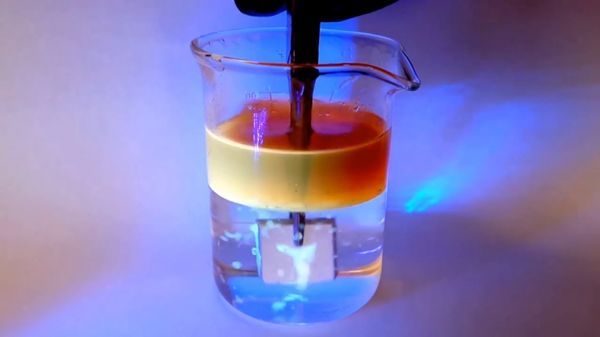
Extending the life of low-cost, compact, lightweight batteries
"New design could greatly extend the shelf life of single-use metal-air batteries for electric vehicles, off-grid storage, and other applications. Metal-air batteries are one of the lightest and most compact types of batteries available, but they can have a major limitation: When not in use, they degrade quickly, as corrosion eats away at their metal electrodes. Now, MIT researchers have found a way to substantially reduce that corrosion, making it possible for such batteries to have much longer shelf lives. While typical rechargeable lithium-ion batteries only lose about 5 percent of their charge after a month of storage, they are too costly, bulky, or heavy for many applications. Primary (nonrechargeable) aluminum-air batteries are much less expensive and more compact and lightweight, but they can lose 80 percent of their charge a month. The MIT design overcomes the problem of corrosion in aluminum-air batteries by introducing an oil barrier between the aluminum electrode and the electrolyte — the fluid between the two battery electrodes that eats away at the aluminum when the battery is on standby." [...]

New quantum criticality discovered in superconductivity
"Using solid state nuclear magnetic resonance (ssNMR) techniques, scientists at the U.S. Department of Energy’s Ames Laboratory discovered a new quantum criticality in a superconducting material, leading to a greater understanding of the link between magnetism and unconventional superconductivity. Most iron-arsenide superconductors display both magnetic and structural (or nematic) transitions, making it difficult to understand the role they play in superconducting states. But a compound of calcium, potassium, iron, and arsenic, and doped with small amounts of nickel, CaK(Fe1-xNix)4As4, first made at Ames Laboratory, has been discovered to exhibit a new magnetic state called a hedgehog spin-vortex crystal antiferromagnetic state without nematic transitions. “Spin or nematic fluctuations can be considered to play an important role for unconventional superconductivity,” said Yuji Furukawa, a senior scientist at Ames Laboratory and a professor of Physics and Astronomy at Iowa State University. “With this particular material, we were able to examine only the magnetic fluctuations, and NMR is one of the most sensitive techniques for examining them.” He continued, “using 75As NMR, we discovered that CaKFe4As4 is located at a hedgehog spin-vortex crystal antiferromagnetic quantum critical point which is avoided due to superconductivity. The discovery of the magnetic quantum criticality without nematicity in CaK(Fe1−xNix)4As4 suggests that the spin fluctuations are the primary driver of superconductivity.” Furukawa’s discovery was a collaboration between Ames Laboratory’s world-leading SSNMR team and the lab’s condensed matter physicists, including Paul Canfield, a senior scientist at Ames Laboratory and a Distinguished Professor and the Robert Allen Wright Professor of Physics and Astronomy at Iowa State University." [...]
Modelos 3D
Com a disponibilidade de ferramentas que permitem dar azo a nossa imaginação na criação de peças 3D e espaços como o thingiverse para as publicar, esta rubrica apresenta alguns modelos selecionados que poderão ser úteis.
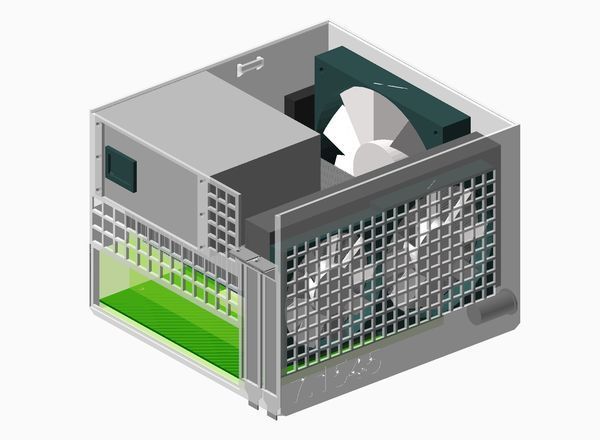
Parametric Case
"An open source 3D printable PC case that can fit your components exactly by adjusting a few parameters. The case is fully built out in OpenSCAD, an open source parametric modeling tool http://www.openscad.org/ You can generate printable stl files from that quickly by adjusting a few parameters to match your components. If you happen to own the same components as I do (Noctua NH-L12s, Zotac 1080 Mini, SFX PSU), you can also just use the example stl files directly. " [...]
Projetos Maker
Diversos Projetos interessantes.

3 Simple Ways of Programming an ESP8266 12X Module
"If you are not familiar with ESP8266 micro controller, I really feel you have been missing out! These things are incredible: they are cheap, powerful and best of all have built-in WiFi!ESP8266 started their journey out as a WiFi add on board for more traditional Arduino boards but shortly after, the community realized the power of them and added support to be able to program directly with the Arduino IDE. These days if you are looking to use an ESP8266 for your project I would recommend using a development board such as the Wemos D1 Mini* ($2.50 delivered!!) or Adafruit Feather Huzzah. These boards have all the usable pins broken out, are easily programmable via their micro USB connector and have a built in 3.3V regulator.But what if you want to use an ESP8266 in a project with a custom PCB? The easiest way is to use an ESP12 module, and in this Instructable I'll show you a couple of simple ways of programming them." [...]

Voice Controlled Glasses and Magnifying Lens
"This project automatically move the lens of a magnification glass using voice commands Many professionals work for many hours looking at very small areas, such as surgeons, watchmakers, jewellery designers and so on. Most of the time theses professionals use some kind of magnification glasses that helps them to see better the area they are working on and other tiny items used on the job. There are many magnifiers that allow the professionals see better and the most common ones are the magnification glasses. The devices that have magnifications lens on a form factor of a glass usually allow the professional to move the lens out of their eye sight, i.e. put aside the lens. However, in some scenarios touching the lens or the glass rim to move away the lens can contaminate the fingers." [...]
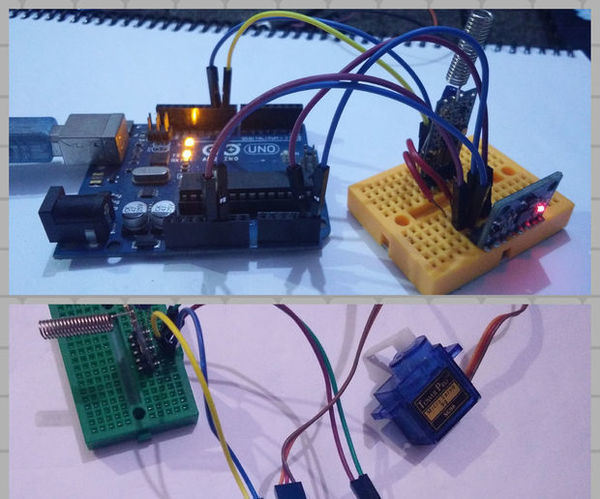
Controlling Servo Using MPU6050 Between Arduino and ESP8266 With HC-12
"In this project, we are controlling the position of a servo motor using the mpu6050 and HC-12 for communication between Arduino UNO and ESP8266 NodeMCU. It is another IoT project based on HC-12 RF-module. Here, the imu(mpu6050) data from arduino is used to control the servo motor (connected with Nodemcu). Here, the data visualization is also performed at arduino side where the mpu6050 pitch data(rotation about x-axis) is visualize with a processing sketch(discussed later). Basically this project is just a little warm up for remembering different aspects of Imu & Servo control with Arduino and ESP8266 nodemcu. OBJECTIVE The objective of this pretty clear, We are controlling the position of Servo motor using the pitch value of IMU." [...]

ESP-NOW Home Automation Esp8266 Raspberry Pi MQTT
"In this Instructable I show you how I used ESP-NOW in my home automation. In the schematic you can see the communication flows I show you:how the sender workshow the receiver workshow the serial communication with a Raspberry Pi works I do not show how MQTT and my home automation works, you can find other good instructions for that. " [...]
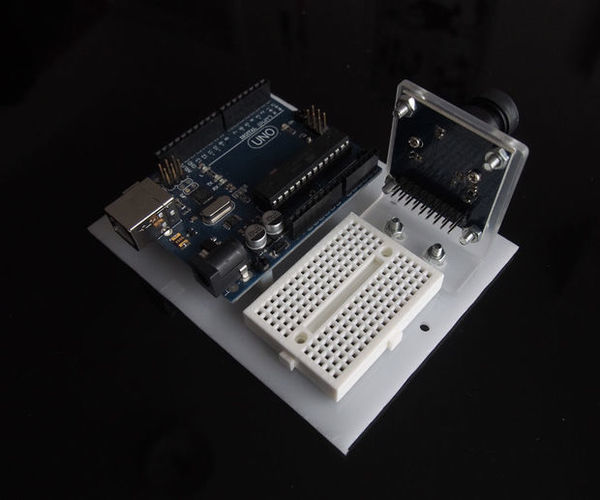
Make Your Own Camera
"This instructable explains how to make a monochrome camera using an Omnivision OV7670 image sensor, an Arduino microcontroller, a few jumper wires, and Processing 3 software. Experimental software for obtaining a color image is also presented. Press the c key to capture a 640*480 pixel image ... press the s key to save the image to file. Successive images are sequentially numbered should you wish to create a short time-lapse movie. The camera is not fast (each scan takes 6.4 seconds) and is only suitable for use in fixed lighting. The cost, excluding your Arduino and PC, is less than a cup of coffee." [...]
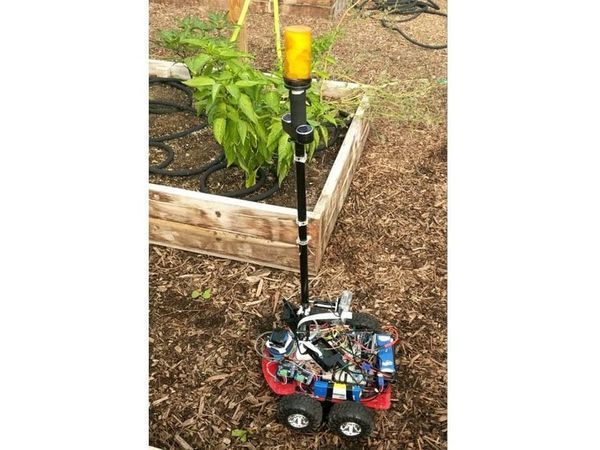
Farmaid: Plant Disease Detection Robot
"Robot that drives around autonomously in greenhouse environment and identifies diseases. Inspired by the work of plantvillage.psu.edu and iita.org, we wanted to use the DonkeyCar platform to build a autonomous robot that can move in a farm environment without damaging existing plants or soil and use object detection to find and mark diseased crops with an environmentally safe color. Traditionally, humans have to manually inspect large farms using their phones to mark the crops, in most high tech cases. This takes a lot of time and effort. Additionally, there are a variety of phones being used that don't necessarily have all the features required to do the task efficiently or they have to wait for someone with the proper device. A uniform robotic platform going around the farm will solve these problems and make the marking much faster." [...]

Arduino oled nitrox analyzer
"This is update version of my DIY nitrox analyzer based on Arduino compatible board. It’s using small oled display and powered by 9v battery. Display o2 percentage of gas, sensor mv output, two MOD(maximum operating depth) in meter. 1 push button for lock screen, calibration, po2 change. Part list Arduino nano compatible board (or any other Arduino board will do) ADS1115 16 Bit DAC Module (the ADS1115 provides 16-bit precision at 860 samples/second over I2C!) 0.96 inch OLED 128×64 I2c display module Rocker or toggle switch for power on/off 1 Push button 1 9v battery connector (better using 3 AA or AAA) 1 Piezo Buzzer (I took one from pc." [...]

1024 LED Matrix WiFi Message Board with Menu
"ESP32 powered 16x8x8 LED matrix displaying real-time news, weather, stock data, date, time and barometer information, menu controllable. The idea After my previous project (Arduino 32x8 LED Matrix Info Display displaying date, time, temperature, humidity) I thought it would be interesting to build a more dynamic display which connects to the internet and can retrieve data from various websites. The message board is built with an ESP32 microcontroller, 16 8x8 LED matrices, a temperature/humidity sensor and a rotary encoder to control what is displayed. The LED matrices are devided into 3 zones: time, alternating date and barometer info and the main message display. The Parola library is used for displaying the messages. After powering up, the ESP32 connects to the local wifi network and a timeserver to get the local date and time and determines if Daylight Saving Time is active or not." [...]
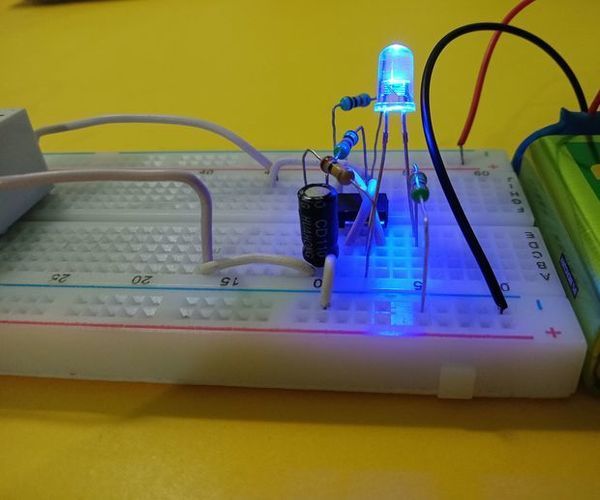
Two Clap ON - Clap OFF Circuits - 555 IC | 4017 IC
"Clap ON - Clap OFF circuit is the circuit which can be used to control variety of electronic equipment by just a CLAP. One clap turns the load ON and another clap turns it OFF. It's very common and simple to make this circuit using IC 4017, but here, I'll also show you how to make it without the 4017 IC, but by using very common IC - 555 Timer IC. " [...]
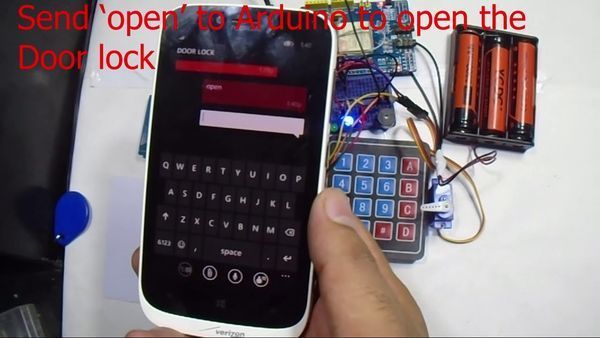
RFID and Keypad Door lock and Alert System Using Arduino
"Upon scanning the right tag and entering right pass, it will open door and send confirmation message otherwise it will send alert message. In the previous post, you learned about RFID and keypad based door lock system in which you had to first scan the right tag and then enter the correct password to open the door lock. Now we are going to add the Sim900 module in that system to make it an RFID and Keypad based Door lock and alert system using Arduino. This is third article of the RFID Arduino series. All articles of RFID Arduino series are as follows - RFID Basics and RFID Module interfacing with Arduino - RFID and Keypad based Door Lock using Arduino - RFID and Keypad based Door Lock and Alert System using Arduino - RFID based Access Control System using Arduino - RFID based Access Control and Alert System using Arduino - RFID and Keypad based Access Control using Arduino - RFID and Keypad Based Access Control and Alert System using Arduino Working of RFID and Keypad based Door lock and Alert System using Arduino - On scanning the wrong tag or on entering the wrong password, it will send us an alert. - On scanning the right tag and on entering the right password, it will send us a confirmation message that the door has opened." [...]

Wireless LED Lamp with IR Remote Control
"An Arduino controlled glowing orb LED lamp with IR remote control. Fitting an Arduino Nano inside the snow globe turned into a messy, and not particularly good looking, job as it had to be mounted upside down inside the plug so that glare from the red indicator lights didn't interfere as much with RGB glow. " [...]
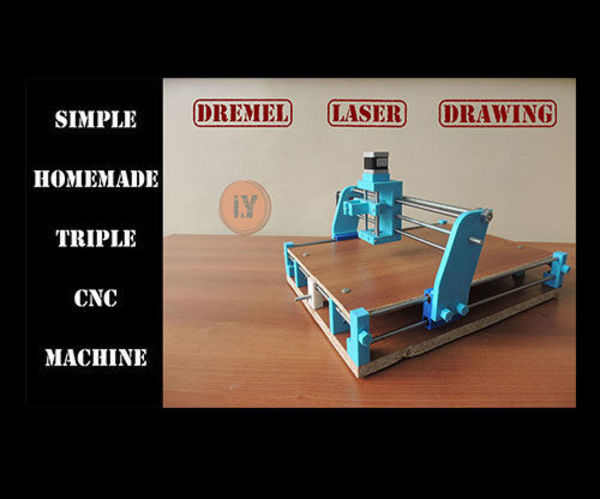
Triple CNC Machine
"After a few weeks' break, we are back with a new project. In this video, we will try to make a simple cnc machine with you. A SIMPLE HOMEMADE TRIPLE MACHINE . With this cnc machine you will be able to do 3 different jobs. - Engraving with Dremel, - Laser cutting - Drawing with pen With the new drawings that we designed as a plug-in, it will be quite simple to use cnc. All you have to do is remove the parts we share in the video description from your 3d printer and provide the necessary materials." [...]
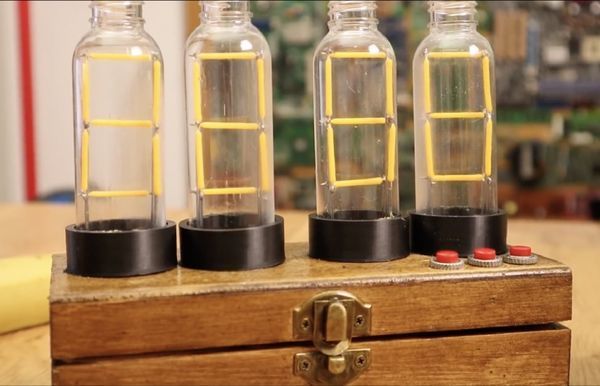
Homemade Nixies - DIY Vintage Clock
"I've made some "nixie" tubes. These are actually 7 segments displays made with filament LEDs but placed in a plastic bottle so it will have a more vintage nixie look. To control the LEDs I'm usig the MAX7219 driver that could control 4 x 7 segments displays. To get the real time, I'm using the DS3231 module that works with a i2c communication so it's easy to use. The project also has 2 push buttons to set the hour and minute. All is inside a wood case painted with varnish so it will look more vintage." [...]

WiFi Solar Weather Station (v2.0)
"In the previous article I described the construction of a weather station based on Arduino using recycled material or anyway present in my laboratory. Appetite comes with eating and I posed a challenge ... I realize a super-zero from scratch ... .Wireless! I open the almond-eyed e-commerce site and take my rechargeable credit card ... On the card there were 4.7 euros! What are you doing? You will say ... .but on these sites are a capital!" [...]
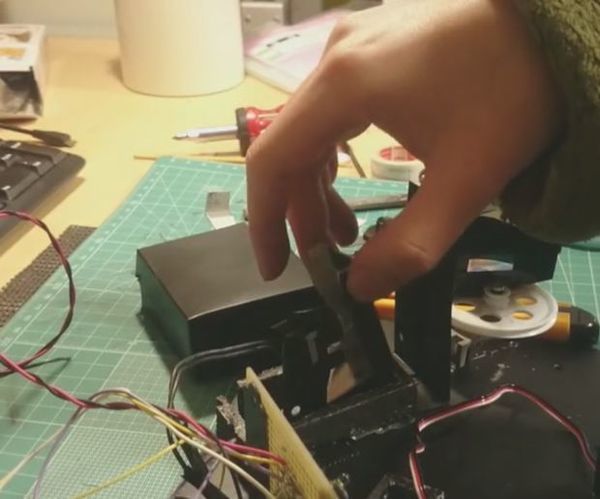
Spectrometer Using Arduino
"The light we observe, for example the sun's light, consists of light of various wavelengths. Also, substances have the property of absorbing light of a specific wavelength. So, if you observe the spectra of distant star's light on earth, you can see which wavelengths are absorbed, so you can see the components of the interstellar gas between the star and the earth. This time I used a mini light bulb instead of the sun, a chemical liquid instead of the interstellar gas, and a photodiode instead of the earth observer. " [...]
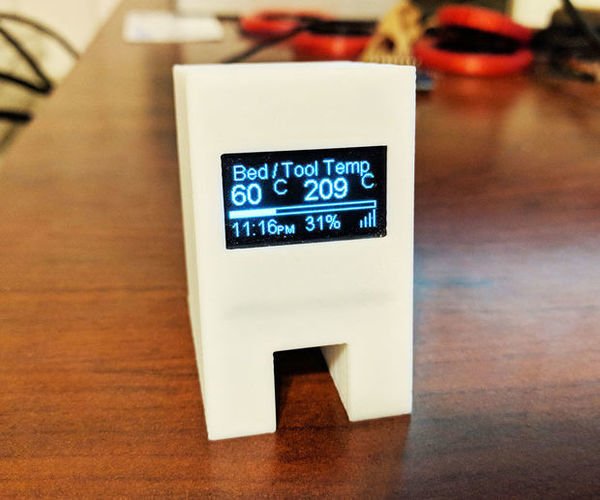
3D Printer Monitor Wemos D1 Mini ESP8266
"Monitor your 3D printer over a wifi connection. This is a Wemos D1 Mini and a 128x64 OLED combined together to display the status from your OctoPrint Server. Requires the following: - OctoPrint Server and the User API Key from your user account - Wemos D1 Mini (ESP8266): https://amzn.to/2ImqD1n - 0.96" OLED I2C 128x64 Display: https://amzn.to/2InSNF0 - 3D Printed Case: https://www.thingiverse.com/thing:2884823 - Arduino Source Code: https://github.com/Qrome/printer-monitor - Soldering Iron Features: - Displays the print status from OctoPrint Server - Estimated time remaining - Time Printing - Percentage complete - Progress bar - Bed and Tool Temperature - Screen turns off when printer is turned off or disconnected - Screen turns on when printer is Operational or connected - Option to display clock instead of sleep mode - Sample rate is every 60 seconds when not printing - Sample rate is every 10 seconds when printing - Fully configurable from the web interface (not required to update Settings.h) - Supports OTA (loading firmware over WiFi connection on same LAN) - Basic Athentication to protect your settings" [...]

Decade Counter Using Ne555 And Cd4026
"A decade counter is a device which is used to count up to 10. It is then reset. A seven segment display is used to display the value stored by the counter. The circuit operates on 9v, supplying a greater voltage may damage the circuit; and supplying lesser voltage may result in the counter not working as proper and efficiently. Counters are used in various places such as stopwatches, timers and calculators. " [...]
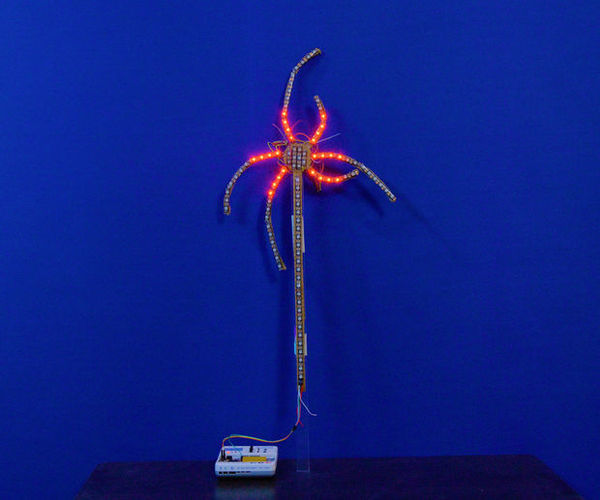
E- kCracker: Firecracker Without Fire Using Arduino Embedded Platform
"P-A-R-T-Why? Because you gotta! Come Diwali, the Indian festival of lights, or New Year, or any other special occasion. Firecrackers = the life of the party. But they dont only add life to the party; they also cause pollution and bring with them health issues. But it aint going to be this way anymore, no sir." [...]
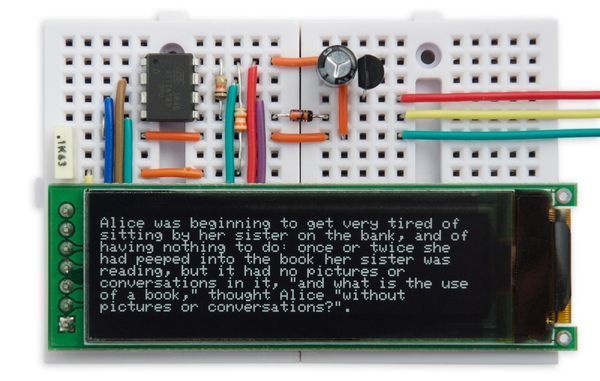
Tiny Terminal 2
"This article describes a text display based on a 256x64 OLED display that provides 8 lines of 42 characters per line. Its width makes it ideal for displaying text or program listings, unlike the more common 128x64 displays. The display is driven by a standard 9600 baud serial interface, making it ideal for debugging serial devices, or as a self-contained character display for a project. Both the display and serial input are handled by an 8-pin ATtiny85, and it's based on my earlier project Tiny Terminal. Design I'm always on the lookout for interesting displays, as the basis for new projects, and I found this 256x64 greyscale OLED display offered by a supplier on Aliexpress [1]. It allows you to have a text display of eight lines with 42 characters per line, which is just about large enough for reading text, and is ideal for program listings." [...]
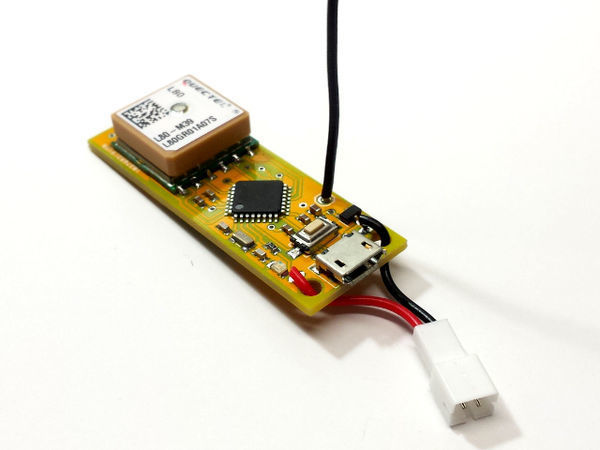
SAMD21 LoRa Development Board with GPS
"I’ve been doing some LoRa projects lately in order to learn as much as I can about this exciting new radio technology (see this LoRa mesh networking project and this LoRa weather station). ATmega328-based Moteino modules work great for a lot of projects, but I wanted a LoRa node with more processing power, more memory, and an onboard GPS receiver. The ATmega328 is just too constrained with memory — I’ve outgrown it. I really wanted a LoRa board with an ARM Cortex microcontroller like the SAMD21. This is the microcontroller used on the Arduino Zero. So, my ideal board is a SAMD21 with LoRa radio module and GPS receiver, all programmable with the Arduino IDE." [...]

Traffic Lights Using Arduino Uno
"Traffic lights using Arduino Uno and 7-segment display. In this project I will show you how to make traffic light signal of one direction using an Arduino Uno and a 7-segment display. This project is very attractive and very much appreciated by teachers of Engineering college. You can also make this project just watch the video and subscribe my youtube channel. Here you can make this project just simply follow the steps. Steps: 1." [...]
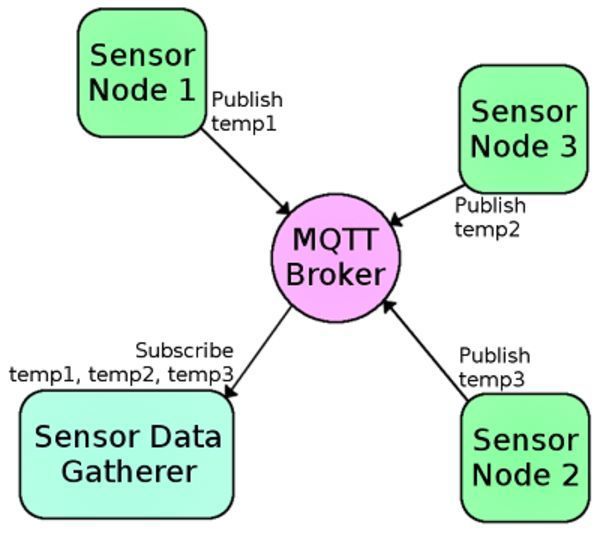
Introduction to MQTT
"In this tutorial, you’ll learn everything you need to know about the MQTT messaging protocol, why you would want to use it, and how it’s implemented. In a nutshell, MQTT uses your existing Internet home network to send messages to your IoT devices and respond to those messages. Brief History MQTT (Message Queuing Telemetry Transport) is a publish/subscribe messaging protocol that works on top of the TCP/IP protocol. The first version of the protocol was developed by Andy Stanford-Clark of IBM and Arlen Nipper of Cirrus Link in 1999. What makes MQTT faster than say sending HTTP requests with your IoT device is MQTT messages can be as small as 2 bytes, whereas HTTP requires headers which contains a lot of information that other devices might not care about. Also, if you have multiple devices waiting for a request with HTTP, you’ll need to send a POST action to each client." [...]

How to Build Solar Based Power Bank Using Dead Mobile's Battery
"This Project is Solar Based Power bank at home with the use of dead mobile phone's battery. We can use any battery equivalent to mobile battery with the same schematic. Solar Panel will charge the battery and we can use the battery's power to charge mobile later. " [...]

Resplendr Pendant
"This project was inspired by Becky Stern and Lady Ada's Adafruit Gemma Hoop Earrings and the wonderful folks with the FastLED library. This instructable will show you how to create a beautiful LED Pendant with one or more LED rings. I like different modes on my wearables so this project incorporates a button as a mode selector. I'm not going to go over how to add multiple rings to your project, but some pictures will give you a few ideas of the possibilities. " [...]
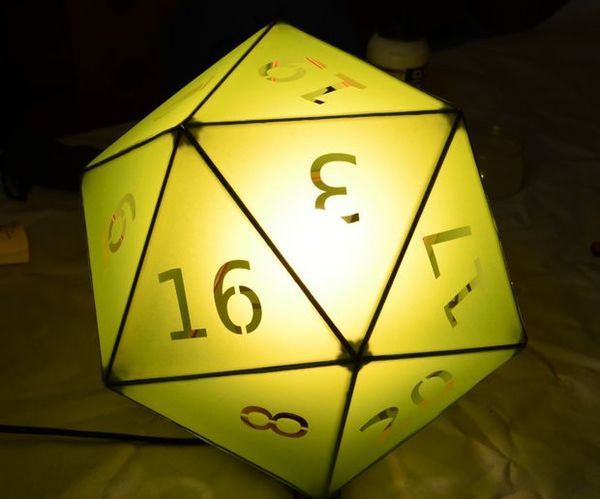
20 Sided Lamp
"I built this lamp with laser-cut 3mm plywood and colored layer paper. I tested several designs since I first though for a simple way to build a geodesic structure. This model is finally too small to test this furhter but I kept thas wooden structure with paper glued on it. Each edge of the structure is a plywood stick with an angle wich allow the edge to group up against each other. I used a cad software to find that right angle : it is 121.718°. My first idea was to hold each edge against the other with a collar." [...]
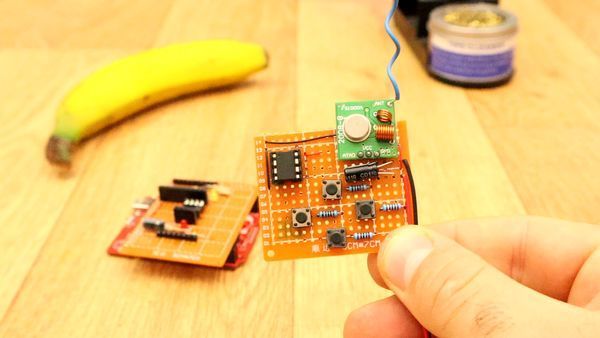
ATtiny Radio Controller
"We have seen a lot of radio controllers on this channel till now. We’ve seen one using the NRF24 module and making the entire board, weeks back we had the controller made with the HC 12 radio module and a gyro control, but today I have a one of the simplest radio-controller. This board use a 433Mhz radio connection and an ATTINY 85 chip, so everything is very simple. It has only 4 “digital” channels so we can’t really use it with drones for example. But we could connect anything to these 4 digital outputs. The design is simple and very cheap, just a few dollars." [...]

DIY SMD Rework Station
"In this Instructable you can learn how to make a hot air gun controller using Arduino and other common components. In this project, PID algorithm is used to calculate the power required and is controlled by a isolated Triac driver. this project uses a handle compatible with 858D, it has a K-type thermocouple, 700 watt 230 VAC heater and a 24 VDC fan. This controller is efficient and reliable compared to the commercial one and is easy to build. " [...]
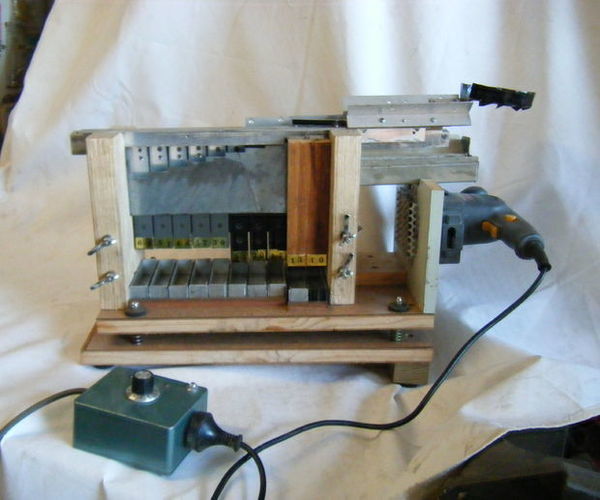
Automatic Screw Sorter
" You know you want one! If you have mountains of unsorted screws in your workshop, you probably spend lots of time looking for "just the right" screws for a job. This screw sorter is the answer! It can sort all your different screws to length, for storage and easy access. I found three designs on You-tube: - Video 1: Felix the handyman: https://www.youtube.com/watch?v=YA69V4txt-M - Video 2: DTU students project : https://www.youtube.com/watch?v=mnoKHHNhiiQ - Video 3: Ray's Screw sorting machine: https://www.youtube.com/watch?v=mnoKHHNhiiQ I did a simple prototype of the DTU design, but screws with all threads and no smooth shank consistently jammed. I developed my machine based on Felix's design." [...]

Mechanical Arm Test Fixture
"I was wanting to test software for an upcoming project and required a mechanical arm to do so.I chose basic forms since the goal was to test function. Future revisions have better aesthetics. This was designed and built on the fly with little more than an idea of the finished arm. There were mistakes made in both thinking and implementation but the arm did its job in the end. Corrections are included in the files for printing where necessary This is just the mechanical parts. Electronics and operation will not be discussed here." [...]
NeoPixel Bike Light
"Build a sci-fi inspired bike light using Adafruit Feather and NeoPixels. Use an RGB LED Button to cycle through different colors and animations. The button will actually match the colors of the NeoPixels! 3D Printed Headlight This is a 3D printed a headlight for my bike. I designed a mounting plate to house a 24x NeoPixel ring and 7x NeoPixel Jewel. The headlight fixture was inspired by rocket boosters and jet engines." [...]

Relays (DC): 99.9% Less Power & Latching Option
"Relay switching is a fundamental element of electrical control systems. Dating back to at least 1833, early electromagnetic relays were developed for telegraphy systems. Prior to the invention of vacuum tubes, and later semiconductors, relays were used as amplifiers. That is, when converting low power signals into higher power signals, or when remote load switching was beneficial or necessary, relays were the state-of-the-art option. Telegraph stations were linked by miles of copper wire. Electrical resistance in those conductors limited the distance the signal could be communicated." [...]
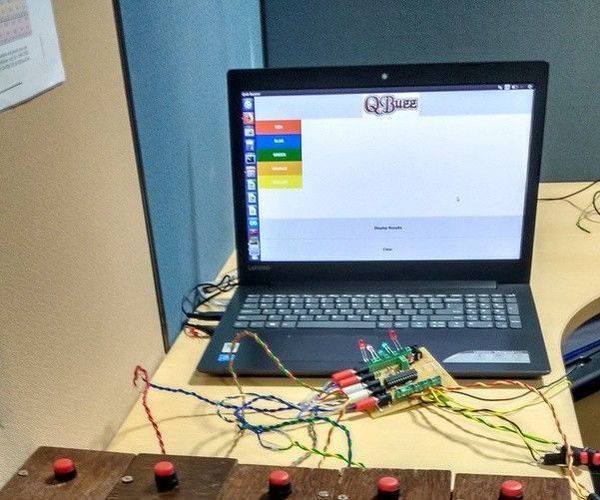
Quiz Buzzer Using ATMEGA328P(Arduino) DIY
"In the buzzer round of quiz contests, the question is thrown open to all the teams. The person who knows the answer hits the buzzer first and then answers the question. Sometimes two or more players hit the buzzer almost simultaneously and it is very difficult to detect which of them has pressed the buzzer first. In television shows, where the whole event is recorded, the actions are replayed in slow motion to detect the first hit. Such slow motions are possible only where huge funds are available to conduct the show. For this reason, buzzer rounds beginning for quiz contests held in colleges." [...]
That's all Folks!


